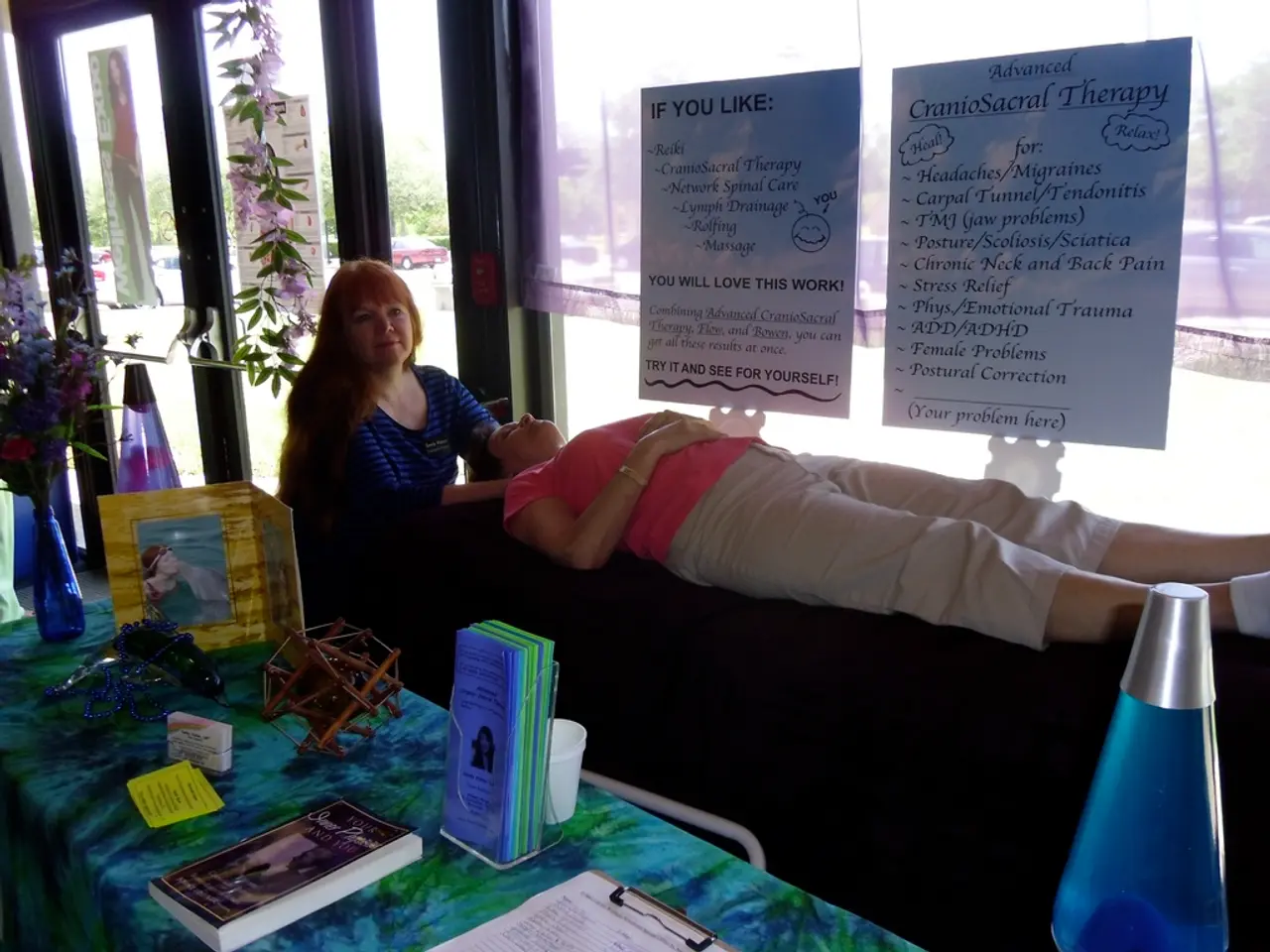Eczema Duration: Information on Treatments and Underlying Causes
Eczema, also known as Atopic Dermatitis (AD), is a common skin condition that affects millions worldwide. Characterized by overly dry skin, inflammation, roughness, and itchiness, AD can persist for years in some individuals, despite improvements as people age.
Understanding Eczema
AD is not limited to one type; contact dermatitis, dyshidrotic eczema, and neurodermatitis are among the various forms. Neurodermatitis, for instance, often starts with one or two itchy patches on the leg, arm, groin, scalp, or back of the neck.
Treatment and Prevention
Effective management of eczema involves a combination of skin care routines, topical medications, systemic treatments, and lifestyle adjustments.
- Moisturizing: Regular application of moisturizers or emollients is crucial to hydrate the skin and repair the skin barrier, preventing dryness and irritation that trigger eczema flare-ups.
- Topical Steroids: These anti-inflammatory creams or ointments reduce redness, itching, and swelling during flare-ups. They are commonly prescribed for mild to moderate eczema.
- Topical Calcineurin Inhibitors: These medications can be used as steroid alternatives to reduce inflammation, especially in sensitive skin areas or when steroids are contraindicated.
- Antihistamines: These are sometimes used to help reduce itching and improve sleep, particularly when itchiness worsens at night.
- Phototherapy (Light Therapy): Exposure to controlled ultraviolet (UV) light can reduce inflammation and itching in moderate to severe cases.
- Wet Wrap Therapy: This involves applying topical medication or moisturizers followed by a damp layer and then a dry layer of clothing or bandage. It enhances skin absorption and hydration, useful for severe eczema flare-ups.
- Systemic Treatments: For moderate to severe eczema unresponsive to topical therapies, systemic treatments such as oral corticosteroids, injectable biologics, and Janus kinase (JAK) inhibitors may be prescribed. These act on the immune system to reduce widespread inflammation but come with more significant potential side effects.
- Lifestyle and Trigger Management: Avoiding known irritants and allergens, using hypoallergenic bedding and clothing, taking shorter, lukewarm showers, managing stress, and bathing with oatmeal baths or soaking can all help manage eczema.
- Regular Dermatologist Visits: Regular visits to a dermatologist can help tailor treatment plans and adjust medications according to eczema severity and response.
The goal of eczema management is long-term control of symptoms rather than a cure. Treatment selection depends on eczema severity, patient age, and specific triggers, making personalized medical advice essential for effective management.
Risk Factors and Prevalence
People with diabetes and cardiovascular disease are at a higher risk of developing stasis dermatitis, a common type of eczema that usually develops on the lower legs of people with reduced blood flow.
AD can develop in about 10-20% of children's first year and about 1-3% of adults also report eczema symptoms. The prevalence of eczema varies by ethnicity, with a greater incidence observed in ethnic minorities, although it is unclear if this is due to genetics or lack of necessary medical resources.
Nummular eczema presents coin-shaped spots or patches on the skin, while stasis dermatitis usually develops on the lower legs of people with reduced blood flow and can lead to open sores or skin ulcers. Eczema can present in various stages, including acute, subacute, and chronic, with chronic stages lasting for several months or longer.
Conclusion
Eczema is a complex condition with various causes, including genetic, environmental, biological, and immunological factors. Proper management involves using skin moisturizers and other treatments effectively, regular dermatologist visits, and lifestyle changes to reduce triggers and promote healing. If you suspect you have eczema, consult a doctor for a diagnosis and treatment.
- For those suffering from eczema, understanding the various personas of this condition, such as contact dermatitis, dyshidrotic eczema, and neurodermatitis, is crucial for effective treaters to devise appropriate treatment plans.
- Neurodermatitis, for example, can start as one or two naive patches on specific parts of the body like the leg, arm, groin, scalp, or back of the neck.
- Science has established various treatments for eczema, including the regular use of advertisements like moisturizers to hydrate the skin and repair the skin barrier.
- Topical medications, such as steroids and calcineurin inhibitors, also play a significant role in reducing inflammation and itching.
- In more severe cases, treatments like phototherapy, wet wrap therapy, systemic treatments, and even lifestyle changes might be necessary to manage symptoms.
- It's essential to note that the treatment selected depends on the severity of the eczema, the age of the person, and specific triggers, making personalized medical advice crucial for effective management.
- People with medical-conditions like diabetes and cardiovascular disease may have an increased risk of developing certain types of eczema, such as stasis dermatitis.




